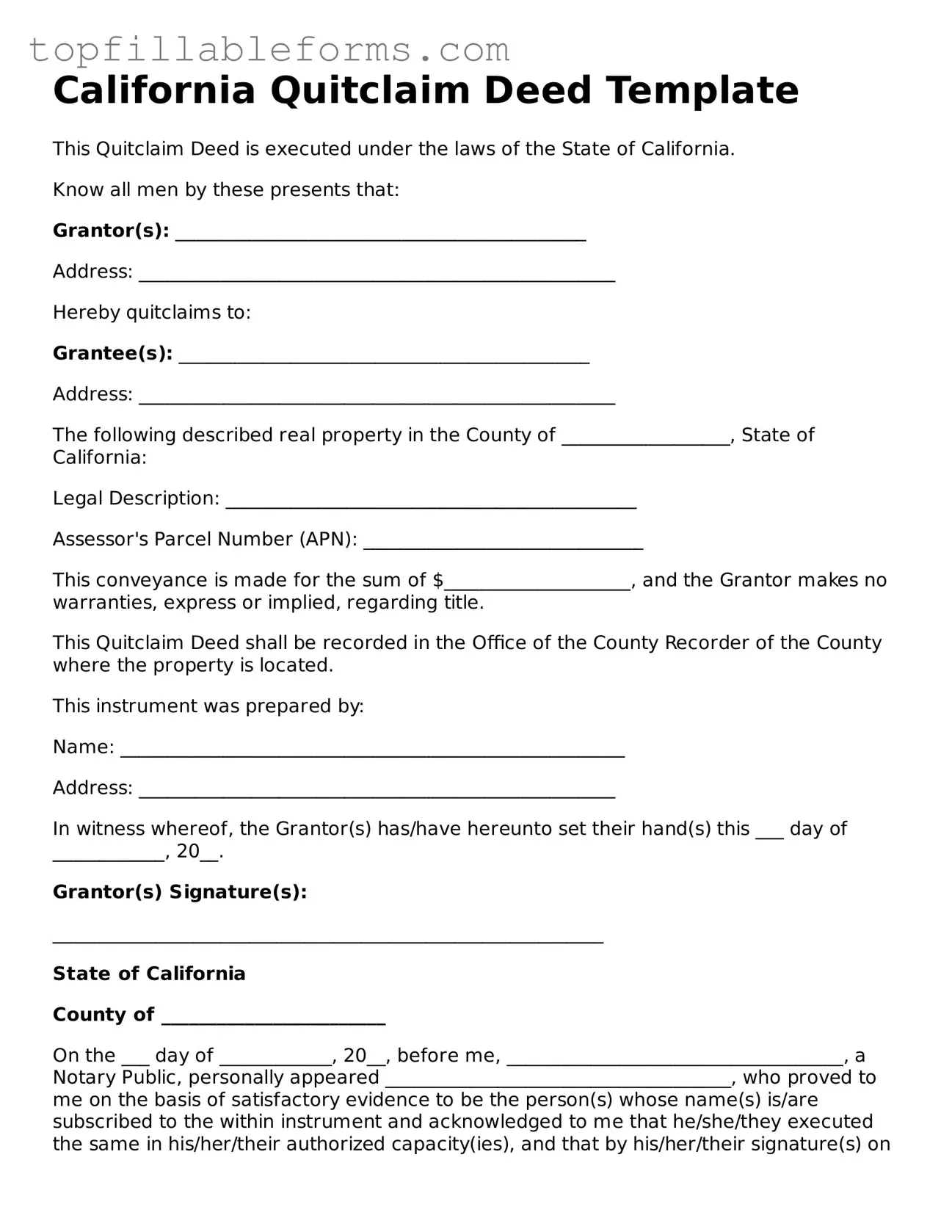California Quitclaim Deed Template
This Quitclaim Deed is executed under the laws of the State of California.
Know all men by these presents that:
Grantor(s): ____________________________________________
Address: ___________________________________________________
Hereby quitclaims to:
Grantee(s): ____________________________________________
Address: ___________________________________________________
The following described real property in the County of __________________, State of California:
Legal Description: ____________________________________________
Assessor's Parcel Number (APN): ______________________________
This conveyance is made for the sum of $____________________, and the Grantor makes no warranties, express or implied, regarding title.
This Quitclaim Deed shall be recorded in the Office of the County Recorder of the County where the property is located.
This instrument was prepared by:
Name: ______________________________________________________
Address: ___________________________________________________
In witness whereof, the Grantor(s) has/have hereunto set their hand(s) this ___ day of ____________, 20__.
Grantor(s) Signature(s):
___________________________________________________________
State of California
County of ________________________
On the ___ day of ____________, 20__, before me, ____________________________________, a Notary Public, personally appeared _____________________________________, who proved to me on the basis of satisfactory evidence to be the person(s) whose name(s) is/are subscribed to the within instrument and acknowledged to me that he/she/they executed the same in his/her/their authorized capacity(ies), and that by his/her/their signature(s) on the instrument, the person(s), or the entity upon behalf of which the person(s) acted, executed the instrument.
I certify under penalty of perjury under the laws of the State of California that the foregoing paragraph is true and correct.
WITNESS my hand and official seal.
Signature: ____________________________________
Notary Public in and for said State
